Queen Elizabeth National Park is located in western Uganda one of the oldest conservation areas in the country its famous for having the largest population of mammals compared to any other national park including the tree climbing lions in the Ishasha sector of the national park. A corridor of animals connecting to Kibale Forest National Park and Bwindi Impenetrable National Park. It is located close to the Rwenzori mountain and was gazette in 1952initially the park was known as Kazinga national park but re named after Queen Elizabeth of Great Britain visiting.
Queen Elizabeth National Park straddles along the equator lying within an altitudinal range of 910 to 1390 meters above sea level the Katwe explosion craters mark the highest point and lake Edward is the lowest. It extends from Lake Edward, Lake George, Kazinga Channel a stream connecting both lakes covering an area of 1978 square kilometers. It is a habitat for many wildlife species including elephants, lions, leopards, waterbucks, warthogs, hippos, crocodiles, buffalo, bush bucks, antelope’s primates including the chimpanzee, baboons, red tailed monkey, in the eastern side of the park along the floor of the Kyambura gorge.
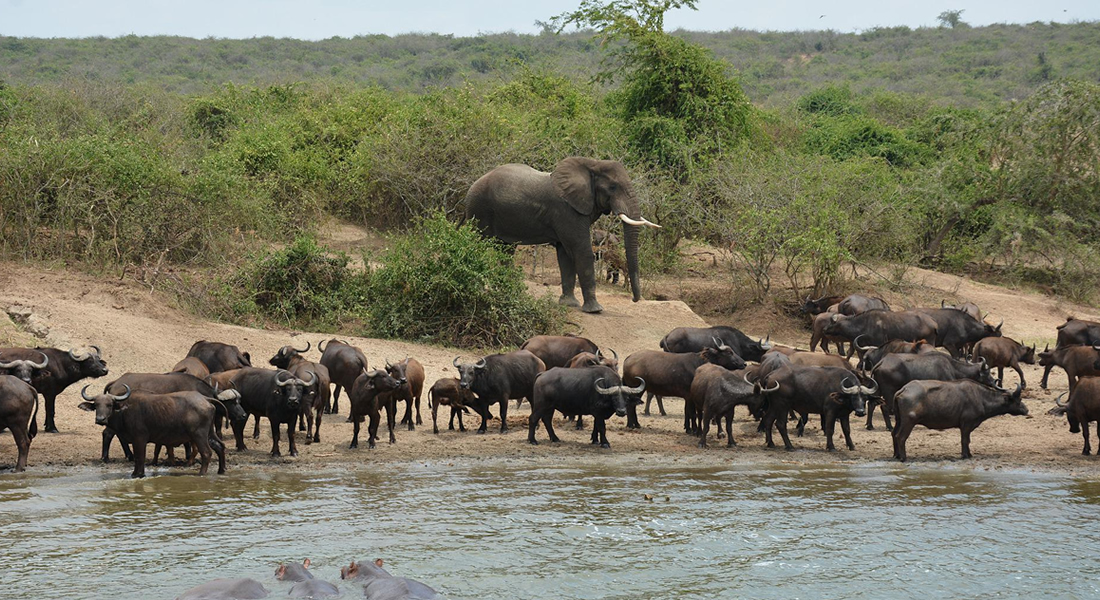
The national park provides a natural habitat for a good number of species ranging from grassy plains, savannah woodlands, tropical forest, swamps, wetlands, lakes and rivers along the floor of the Albertine rift valley between the lakes of George and Edward. It contains the highest number of bird species over 619 kinds second highest in Africa and 6th in the whole world named as a paradise of birds some of which are African jacana, knob billed ducks, hairy breasted barbet, swamp fly catcher, malachite’s, herons, blue headed turaco, white backed African vulture, pied king fishers, sunbirds, wattled plover, African fish eagle the Mweya peninsular is an important birding area between the kazinga channel and lake Edward.
Queen Elizabeth National Park covers about 1958 square kilometers encompassing the southern sector of the park famous for the tree climbing lions in the fig trees, the land scape is unique in the Ishasha sector compared to other parts of the park, the Kasenyi plains fascinate endless views of the savannah grasslands it’s a breeding ground for Uganda kobs attracting prey it’s the only Ugandan park where tourists can enjoy wild life in the air, balloon safaris are done in this park and bush breakfasts.
The kazinga channel is dominant in Queen Elizabeth National Park a natural stream between lake Edward and George, one of the places with a high concentration of hippos in the whole world, it is a water catchment area for many animals in the national park, they come around to graze and drink water especially during the dry seasons.
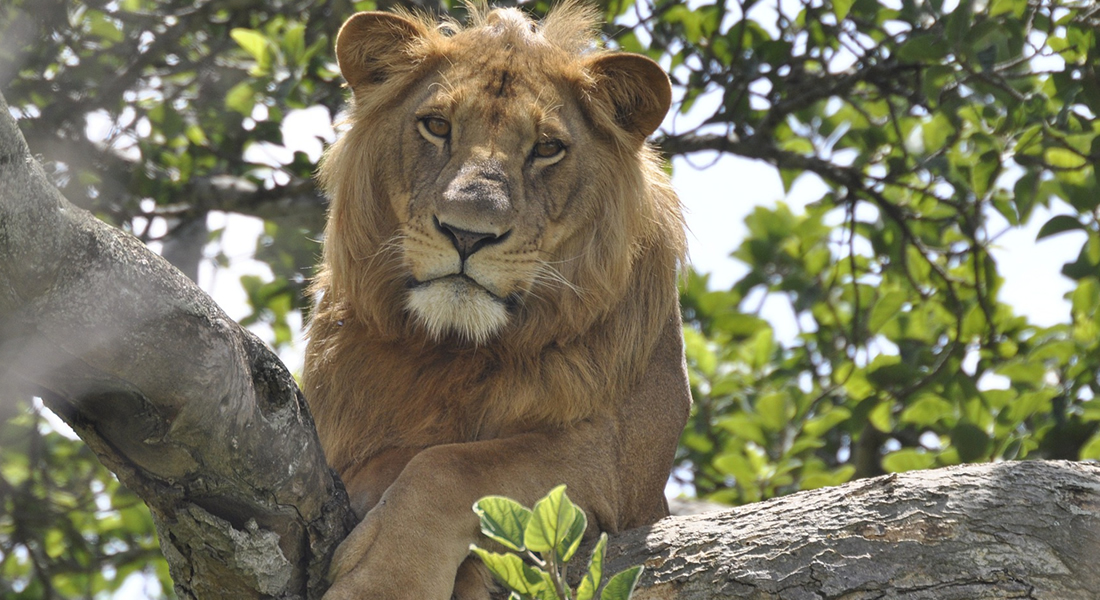
Maramagambo forest is part of the Queen Elizabeth National Park to the east, it is a good destination or hiking and nature walks its home to 7 primate species for example the l’hoest monkey, baboons, red tailed monkey, blue monkeys, vervet monkey and a variety of bird species like white napped pigeons, Rwenzori turaco, forest fly catchers, the Kalinzu forest is also located near the national park some of the park primates live in these forests.
The park temperature is warm and can be visited all year round with uniform temperatures, day time can rise up to 29°c to 84°c and nights tend to drop normally between 17°cto 19°c, the best time to visit the park is during the dry seasons categorized under short and long, December – February and June to mid-September it should be noted that the dry seasons are not very dry like sometimes it rains even during this time it’s a better season to do most of the activities in the national park and a peak season for tourists, the wet season ranges from march-May and late September- November in this period the park receives a maximum of 1390mm of rainfall annually however temperatures are with a very minimal change during wet seasons.
It is advisable to wear long sleeved shirts and trousers, water proof covers for phones and cameras, boots, sunscreen, hats, insect repellents and other personal material needed for a trip and importantly a yellow fever vaccination card is required to access the country, there is available accommodation in and outside the national park ranging from luxury to best budget.
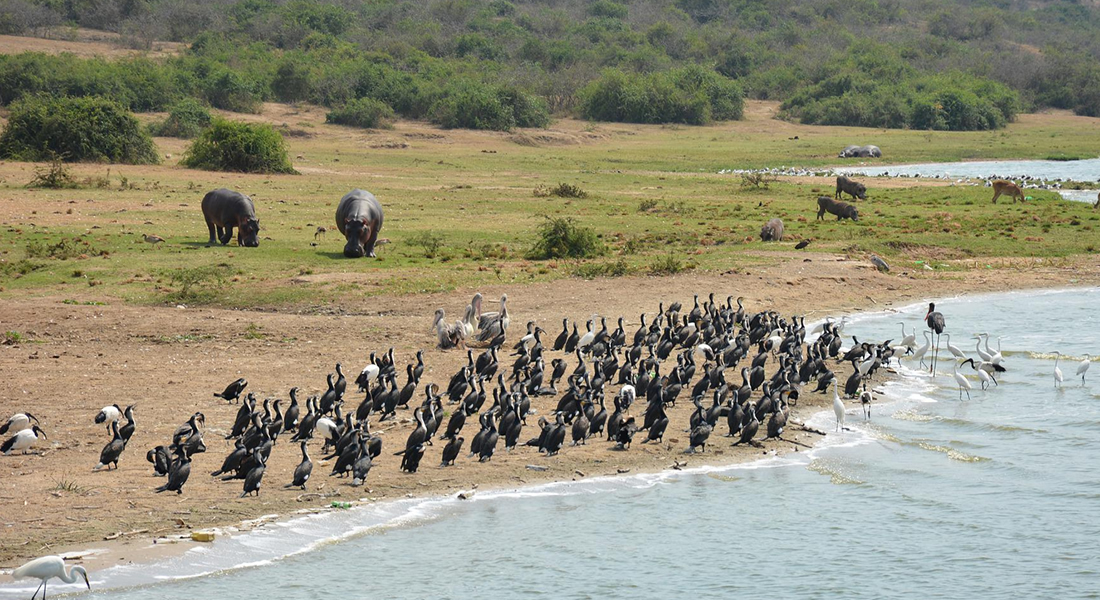
The park is approximately 410km to the north through fort portal from Kampala by road, chatter flights can be organized to the existing airstrips Kasese, Mweya and Ishasha form Entebbe or Kajansi to create more time for activities like birding, chimpanzee tracking, game drives, experiential lion tracking among others.
Tourism Activities in Queen Elizabeth National Park
Queen Elizabeth National Park Uganda’s most popular destination famous for tree climbing lions, it is the second largest conservation area after Murchison Falls National Park a big diverse area with several ecosystems like grassy savannah, lakes, craters, volcanic cones and forests, habitats to several species of wild animals and home to over 600 species of birds, the park is one of the most important Ugandan birding areas commonly noted as a paradise of birds gifted with several attractions that make it a prime destination for interesting activities.
Game drives are a major activity in Queen Elizabeth National Park highlighted on most safari visits, the park has well distributed game tracks that lead you through most of the uncovered areas viewing a good number of game you could spot lions feeding on prey, antelopes, buffaloes, elephants, antelopes, waterbucks, hyenas, giant forest hogs, warthogs to mention a few, the game drives take place in the early mornings in order to catch up with the morning risers especially the cats, it can be continued to the Ishasha sector for tree climbing lions and topis, a number of African birds can be seen on game drives as well.
Queen Elizabeth National Park is Uganda’s most sought of birding destination, over 600 species of birds are notable in the park most of which are regarded as east African birds, most of the sightings are in the Mweya peninsular between the kazinga channel and Lake Edward, Kasenyi plains, Katwe area, Lake Kikorongo and the Ishasha sector examples of the birds include, lesser flamingos, pink backed pelicans, African jacana, black crake, lesser swamp warbler, African crowned eagle, ross’s turaco, African green pigeon, palm nut vulture, broad tailed warbler, famous shoe bill, African white backed vulture, southern red bishop, black bishop, African paradise fly catcher, brown eared wood pecker, grey headed kingfisher, pygmy kingfisher among many species.
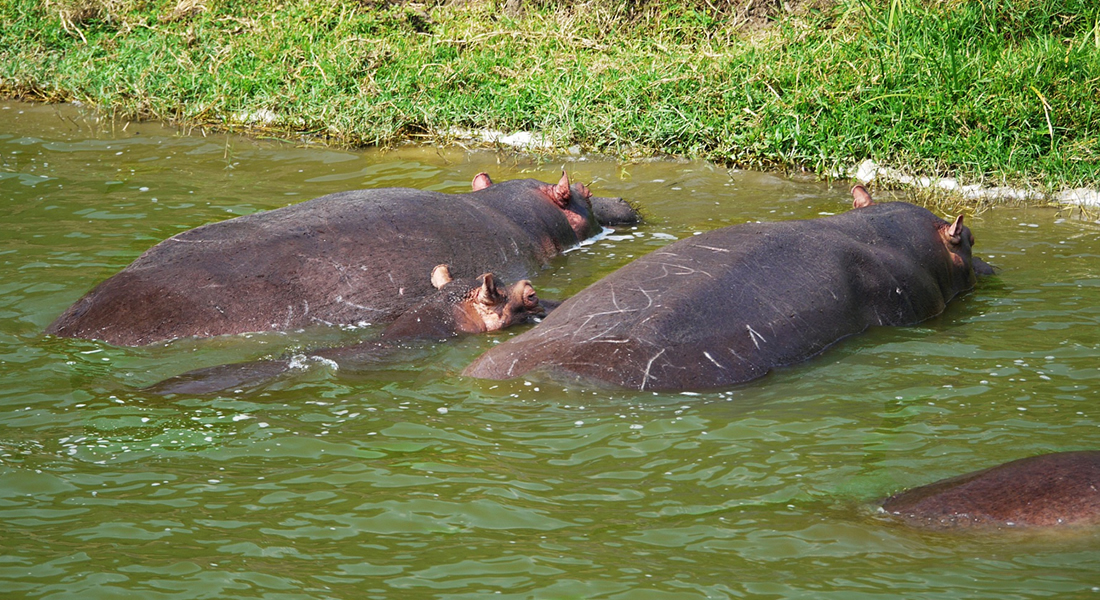
Boat cruise along the Kazinga Channel it is a natural stream connecting between lake Edward and George the channel has some of the largest population density of hippos in the world, a lot of animals gather along the channel to feed and drink water hence a chance of seeing many species including the fierce Nile crocodiles along the banks of the Kazinga Channel, a boat cruise downstream to lake Edward offers excellent views of this wild life, there are two sessions in the morning and afternoon times for sundowners, bookings can be done at the Mweya Safari Lodge.
Chimpanzee tracking in the Kyambura gorge which supports a fair population of chimpanzee in the queen Elizabeth national park, it acts as an oasis to the park during the dry seasons, it’s the only place to find chimpanzee with in the national park, other primates include the vervet monkeys, olive baboons, red tailed monkey, black and white colobus monkey, the chimpanzees have been habituated they are very lively and interesting, chimpanzee is mans close relative sharing DNA of up to 98% they are very intelligent and social species tracking is done in the morning times.
The Ishasha sector is home to tree climbing lions a major safari highlight on an African tour, lions keep relaxed up in the huge fig trees as they wait for their prey, the sector is an exciting journey through to or from Bwindi impenetrable national park, wildlife like elephants, topi, elands, waterbucks can easily be spotted even while on the road. The area used to act as a wildlife corridor between Kibale forest national park and the Bwindi impenetrable national park.
Lion tracking is an experiential activity in queen national park, it involves one getting to a closer look at the lions, gives them more time with the prey, learn more about the lions it is more of a research, it involves a lot of lion learning a limited number of participants are allowed to track lions starts in the early morning with monitoring and following the lions, they move in groups of 3-25 individuals called prides.
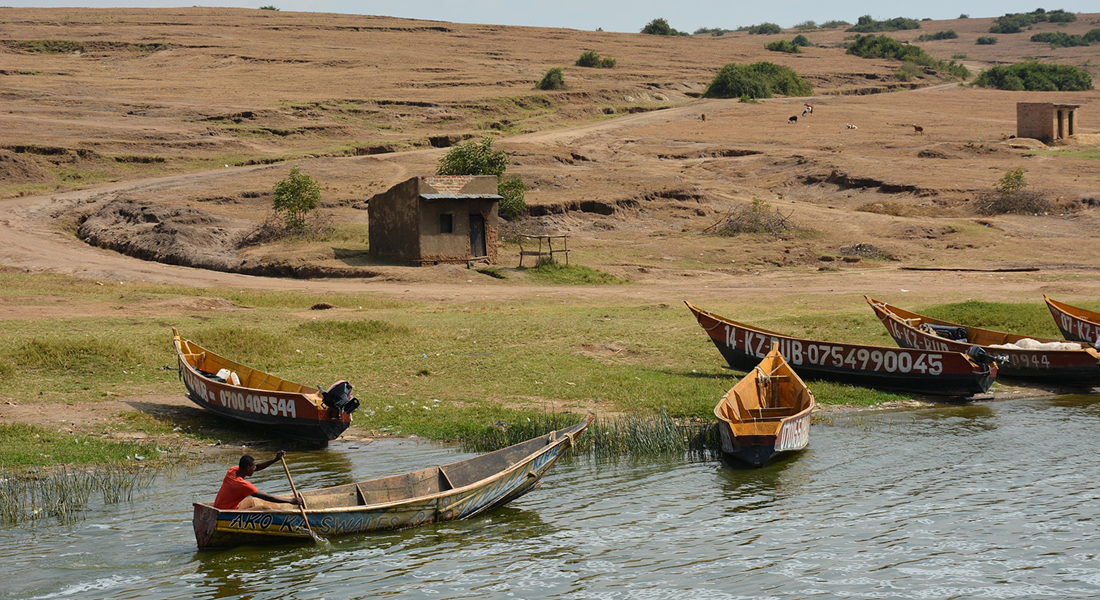
Guided nature walks through the forest of Maramagambo trips to the forest are mostly taken by birding tourists, whilst the way there are existing primates that could be encountered pythons and bats in the bat cave, short walks in the Ishasha sector lead to beautiful views of hippos.
Cultural performances around the communities at queen Elizabeth national park, the Katwe salt miners perform traditional dances, and the Kikorongo cultural dancers at the equator, visitors can tour traditional huts of the Bakonzo and the Basongora ethnic groups and purchase handicrafts made in local communities.
The park is approximately 410km to the north through fort portal from Kampala by road, chatter flights can be organized to the existing airstrips Kasese, Mweya and Ishasha from Entebbe or Kajansi, there is available comfortable accommodation and above all the park can be visited all throughout the year, its best time being a dry season of December-February, June to mid-September.
Tourism Attractions in Queen Elizabeth National Park
Queen Elizabeth national park is located in the south western part of Uganda one of the oldest and popular gazette conservation areas of the country covering an area of 1978 square kilometers, it famous for tree climbing lions in the ishasha sector south of the national park raised between 910m-1390m above sea level on the floor of the Albertine rift valley. The park has a diverse eco-system including savannah, humid forest, tropical forests, equator, lakes, wetlands, volcanic features, deep craters, and crater lakes like Katwe within which are a number of animals like elephants, lions, warthogs, bush bucks, water bucks, hippos, antelopes and over 600 species of birds.
Kyambura Gorge lies within the eastern part of the park a home to primates majorly chimpanzee, it is commonly known as the ‘valley of apes’ and acts as an oasis to the national park during the dry seasons it is constantly watered by a stream called Kyambura that keeps its with water all throughout the year for animals and the forest, Kyambura is the longest ravine in East Africa standing out with chimpanzee tracking an ape that closest to human beings, the share up to 98% of the human DNA ,intelligent and social species, other primates include black and white colobus monkeys, vervet monkeys, blue monkey, olive baboons, red-tailed monkeys to mention a few, the gorge is hidden in that most tourist tend to miss out a drama of beauty amalgamated birds , butterflies and other mammal species that live within the gorge.
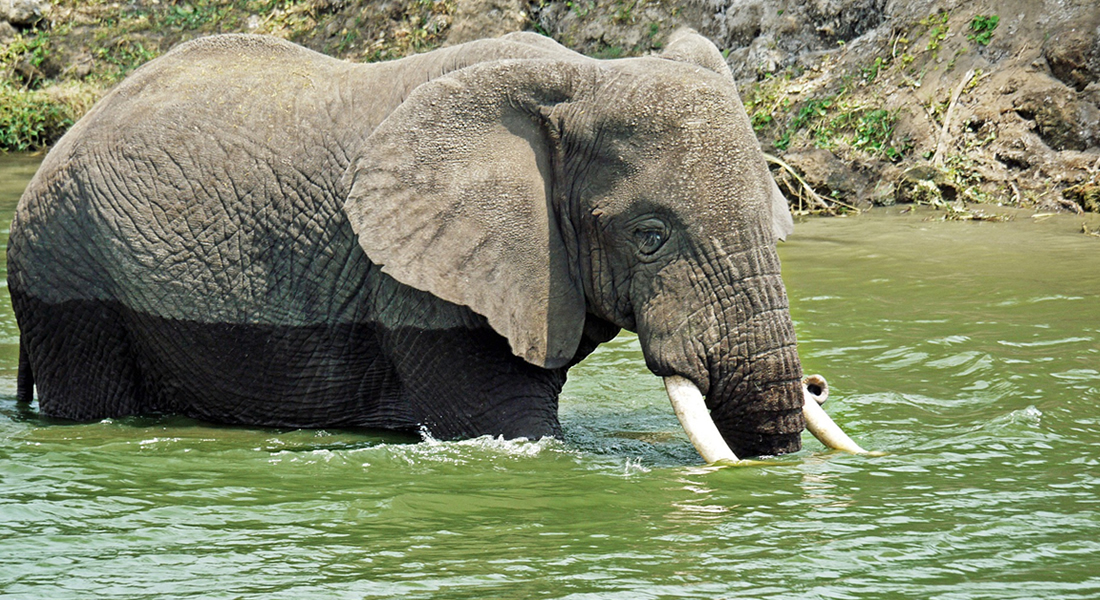
The famous Kazinga channel connecting lake George and Edward a dominant feature in queen Elizabeth national park 32 meters wide between the two lakes, a number of animals gather to the channel for drinking water and pastures including several bird’s species, it hosts one of the largest population density of hippos worldwide, the animals can be seen best on boat down the course of the channel in the morning and afternoon times its rewarding as you will see an amalgamation of animals including crocodiles and hippos all together at the same time water birds such as pink backed pelicans, African skimmers, shoe bill stork , great flamingos, blue turaco, African white backed culture, and many more.
Queen Elizabeth national park has the highest number of mammal species compered to any other Ugandan national park 95 kinds exist for example Uganda kobs, waterbuck, loins, leopards, hyenas, antelopes, topis, bushbuck’s chimpanzee, vervet monkeys, among other mammal, species its home to more than 600 species of birds some of which include the African jacana, knob billed ducks, hairy breasted barbet, swamp fly catcher, malachite’s, herons the vegetation of the park is dominated by savannah grasslands, forests, lakes, craters that make it a perfect habitat for a biodiversity of mammal species.
The national park has numerous crater lakes curved through beautiful rolling green hills at the backdrop is the Rwenzori mountain, one of the most famous is the lake Katwe popular for salt extraction the community has gotten salt traditionally from the lake ever since the 16th century several streams floor water to lake but it has no out let and due to intense heat, the water gets too salty, lake Munyange is an important birding area, spotted are the lesser flamingos, grey crowned cranes, African harrier, egrets, herons.
The Maramagambo forest is part of the queen Elizabeth national park to the east neighbored by Lake Kyasanduka and Lake Nyamusingiri it is a good destination or hiking and nature walks its home to 7 primate species for example the l’hoest monkey, baboons, red tailed monkey, blue monkeys, vervet monkey and a variety of bird species like white napped pigeons, Rwenzori turaco, forest fly catchers, bats live in a cave and pythons that live alongside the bats.
The ishasha sector for tree climbing lions that are an exceptional attraction in queen Elizabeth national park mostly the top safari highlight the lions are commonly spotted in the southern sector on fig trees, they feed on antelopes that graze in the savannah plains of the ishasha, it also has elephants, bushbucks, warthogs, topis and waterbucks.
The park can be visited all year round but best during the dry season of December- February and June to mid-September the parks temperatures are constant all throughout the year, it’s advisable to carry long sleeved shirts and trousers, insect repellents, hats, sunscreen, boots and any other necessary travel requirements. The park is approximately 410km to the north through fort portal from Kampala by road, chatter flights can be organized to the existing airstrips Kasese, Mweya and ishasha form Entebbe or Kajansi to create more time for activities like birding, chimpanzee tracking, game drives, experiential lion tracking among others.
Where to Stay in Queen Elizabeth National Park
Queen Elizabeth National Park lies in the western part of Uganda, second largest national park straddling along the equator, its park boundaries stretch up to 1958 square kilometers gazette in 1952 as Kazinga National Park, it was renamed after a visit of Queen Elizabeth the second of the Great Britain, it is Uganda’s most popular destination with a wide variety of wildlife in an eco-diverse system beginning from the savannah grasslands, tropical forests, lakes, swamps and rivers at an altitude of 910- 3190m above sea level and at the back drop is Rwenzori mountains.
The park accommodation is best allocated within the national park east, west and south of the park, it has a range of lodges, hotels, and camps where you can base while on your adventure to Africa, the facilities range from luxury to the best budget so depending on where it is pocket friendly for you there is always room for everybody, most noted ones are:
The Ishasha wilderness camp situated within Queen Elizabeth National Park in the Ishasha sector well known for the tree climbing lions, it is a luxury facility providing a cozy and comfortable stay for visitors to the national park, the exclusive camp being within the national park, it’s possible to enjoy elephants, buffalos and resident troops of black and white colobus monkey and vervet monkeys they prepare mouth-watering food to the best of their standards.
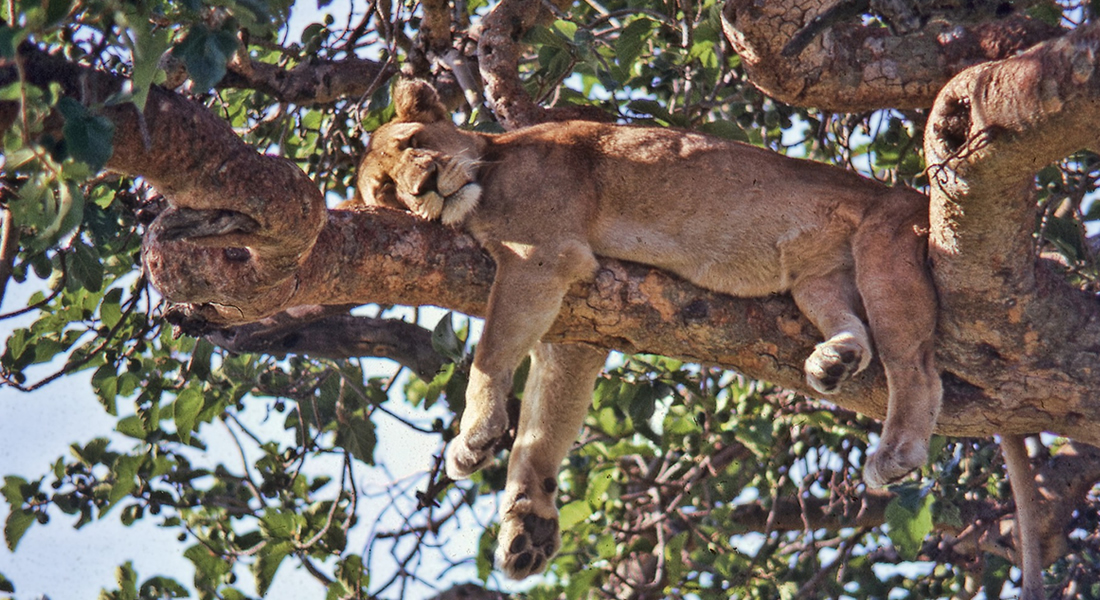
Mweya safari lodge offers visitors the best experience located in the Mweya peninsular overlooking the Kazinga channel, the lodge has a series of rooms fitted with a private balcony, a sitting room and an en-suite bathroom, its composed of a swimming pool, a pool side bar and a restaurant, it organizes some activities for clients, each of the rooms has excellent views of the Kazinga channel animals like the lions, Uganda kobs, elephants, warthogs could be spotted.
Ihamba safari lodge is a beautiful lodge well designed with stones and thatched cottages that are best suited to the environment, it offers magnificent views of the misty Rwenzori mountains the lavish and comfortable facility gives high quality services serving different types of cuisines while at the lodge, you can do game drives, bird watching for this is a bird destination.
The Jacana safari lodge is positioned in Uganda’s biggest crater lake Nyamusingire and distant Maramagambo forest, the lodge is built and designed with African architecture featuring a big swimming pool, it prepares delicious meals and goes an extra mile to ensure guest satisfaction, its closet to the southern part of the park birds like the, pink backed pelicans, African jacana, African crowned eagle, ross’s turaco, African green pigeon, palm nut vulture could be spotted in the area
The Kyambura game lodge is found in the eastern extension of the national park in the gorge, it is crafted using local materials in an eco-friendly way to leave no negative foot print the lodge offers luxurious cottages with extensive wooden balconies and en-suite bathrooms one can stay here while tracking chimpanzee in the Kyambura gorge, it hosts a number of primates as well besides the chimpanzee and bird species.
The bush lodge is an eco-friendly lodge with Banda’s placed in the best way to maximize privacy with a unique setup out looking the kazinga channel, the safari camp offers an affordable setting with a great out door safari atmosphere, the rooms are built on wooden plat forms having an en-suite bathroom the tents are both self and non-self-contained.
Katara lodge is located right outside the national park, with spacious and large cottages en-suite with private bathrooms, the main lodge around the restaurant and bar areas have excellent views of the savannah and the surrounding environment.
Buffalo safari lodge, a mid- level facility in good proximity of the national park, the lodge is set on a quiet environment stretching up to the magical Kazinga channel connecting the Lakes of Edward and George where you can find loads of hippos and an amalgamation of animal species.
Queen Elizabeth National Park is dotted with many more different accommodation facilities some of which have not been mentioned, they avail a comfortable stay to visitors that come to the park, visits can be interconnected to Bwindi and Kibale Forest National Park.
Best Time to Visit Queen Elizabeth National Park
Queen Elizabeth National Park is located in the western part of Uganda straddling along the equator, it is a very popular Ugandan destination with a biodiverse ecosystem ranging from savannah, wetlands, volcanic cones, craters and humid forests, this makes it a perfect hub for wildlife that lives with in the national park it is set at the backdrop of the Rwenzori mountains and a series of beautiful rolling hills containing the highest number of mammal species compared to any other Ugandan park. Queen Elizabeth national park lies at an altitude of 910 to 1390 m above sea level gazette in 1952 as kazinga national park which was later renamed after a visit of queen Elizabeth the 2nd of Great Britain. The national park covers an area of approximately 1978 square kilometers along the floor of the Albertine rift valley, its main attractions can be viewed in the dissected sectors of Ishasha, kyambura, Kasenyi and the Maramagambo forest.
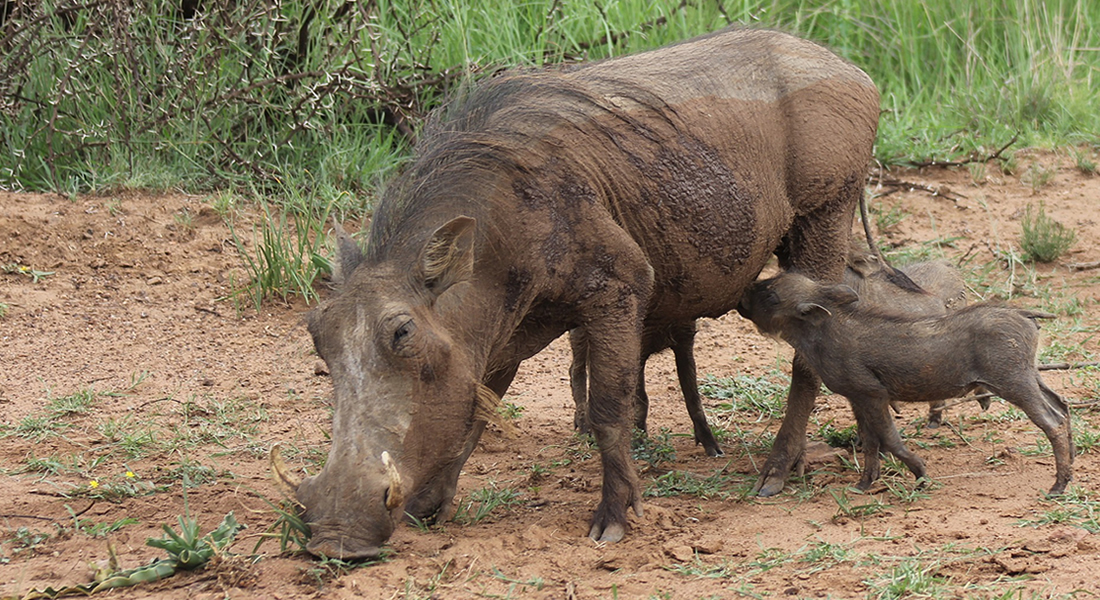
Queen Elizabeth National Park can be visited throughout the year each of the seasons having their advantages however many of the people want to know which is the best of the time to visit the national park, the dry season is the most favorable time to visit the national park in the months of December to February and June to mid- September during this time, the animals are seen easily because they keep wandering in search of water and food , the vegetation is thin leading to easy spotting of the animals it’s the best time to go game driving game tracks are dry hence an easy accessibility and view of wildlife , guided nature walks in less muddy routes, it is a good time to track chimpanzee in the Kyambura gorge, it is a time when tourism is at its peak most of the people travel during this time.it should be noted that the dry seasons are not very dry like sometimes it rains even during this time it’s a better season to do most of the activities.
The wet seasons come in the months of October, November, march, April and may at this time the park is extremely beautiful due to blossom of most plants and trees, the vegetation is typically green and captures excellent photographs of the tropics, birds of different species flood the park during the wet seasons the park is a paradise of birds with quite a good number of species in the whole country for example African jacana, knob billed ducks, hairy breasted barbet, swamp fly catcher, malachite’s, herons, blue headed turaco, white backed African vulture, pied king fishers, sunbirds, wattled plover, African fish eagle it is a time of bird watching and the forest is greener with plenty of food for the birds.
The park contains 95 species of mammals having the highest number compared to any other Ugandan national park it includes, lions, elephants, buffaloes, hippos, antelopes, topis, waterbucks, Uganda kobs and over 600 species of birds are found in the various ecosystems of the national park. Physical features lie volcanic cones, craters, lakes, exploration points like Katwe catch so many people to the national park.
The parks temperatures are constant throughout out the year its temperature is warm and can be visited all year round with uniform temperatures, day time can rise up to 29°c to 84°c and nights tend to drop normally between 17°c to 19°c the park receives a maximum of 1390mm of rainfall annually however temperatures are with a very minimal change during wet seasons however it gets cold during the morning and evening times so it’s advisable to come along with long sleeved shirts and trousers together with warm clothes , sunscreen for sunny days, boots for nature walks, insect repellents, water proof covers for phones and cameras, Uganda is a tropical climatic region so it rains anytime.
The park can be lies approximately 410 kilometers from Kampala the capital of Uganda by road, chatter flights can be organized from Entebbe of Kajansi to the nearest airstrips of queen Elizabeth national park, there is comfortable accommodation within and outside the national park for example Mweya safari lodge, Katara lodge, Bush lodge, Ishasha wilderness camp that go an extra mile to ensure the comfort of clients that visit the national park.

